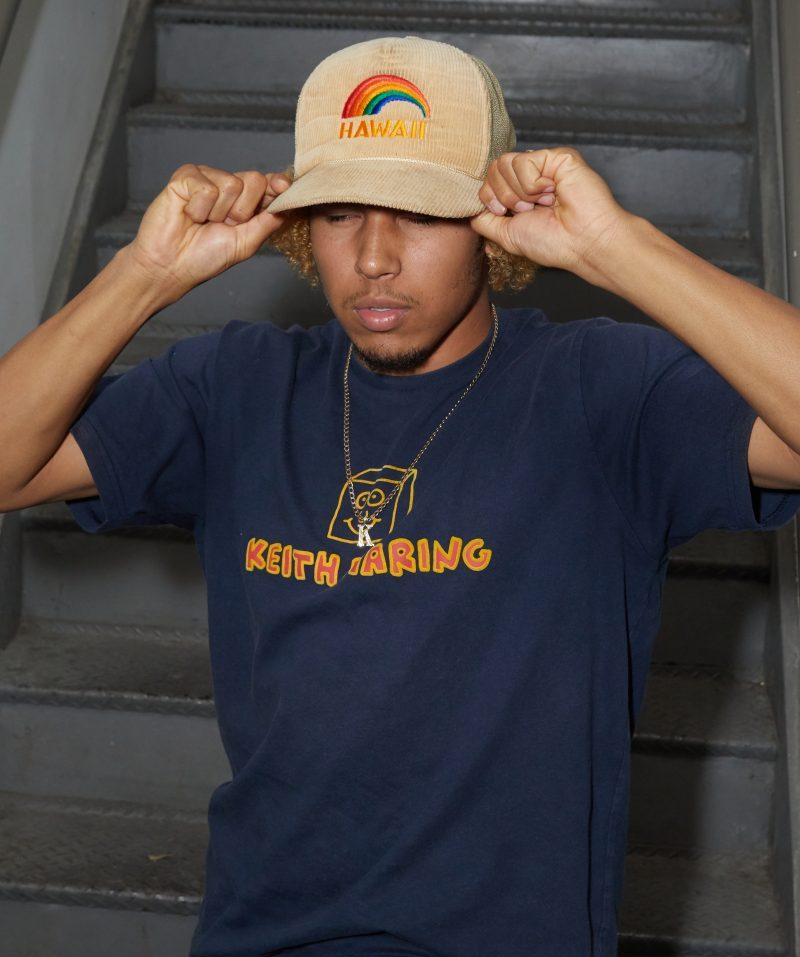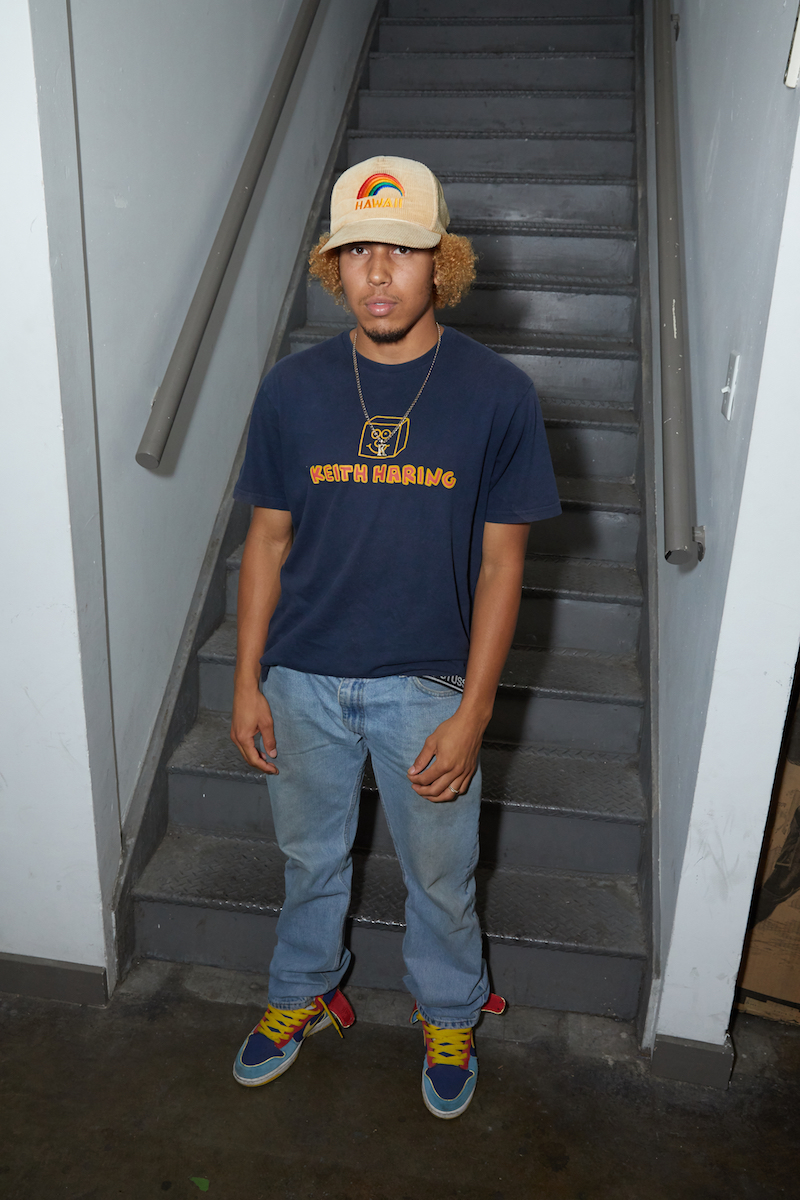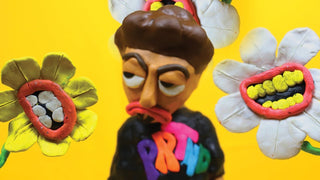Working with clay is a labor of love, an exhausting process that results in some of the most expressive art imaginable. The sculptor’s vision comes to life in a way not many other mediums can produce. Depth, texture, and flaws. It takes time to get it right, and even then, the work is never done. The cracks and imperfections show character and tell the story of where that individual piece has been and what it’s gone through.
When Kazi, a 23-year-old artist from the Crenshaw District, came to visit The Hundreds HQ a couple of months ago, he wowed us with his multidisciplinary work. Kazi creates truly signature art, from his music to his claymation. It’s all so uniquely him, and that’s what we loved about it. It’s raw and unrefined and it gets better as it goes because Kazi is learning in real time. Every time he puts something out, you can feel the progression, making it difficult to imagine where he could go with it in the future.
Kazi’s music video for “Toy” was his first foray into working with clay and it took five months to create, far longer than the average music video. Each and every little movement has to be orchestrated and shot individually in stop motion, meaning just a few seconds of video could take hours or days of work.
“I was thinking I had to come up with artwork that’s just as crazy as the song,” Kazi told me. “I was figuring out different mediums to use, thinking about a puppet, a little action figure. I kept looking up different ways to get the idea across, and then just decided I would try to sculpt this shit.”
“I went to Michael’s and bought the clay. I had never sculpted before. I made this sick ass clay puppet and took a picture of it, and that became the cover.”
Then, he figured, why not animate the clay figure and make it the star of the “Toy” music video? It took months of trial-and-error to get the clay sculpture to the point where it could make all the movements required in the video, and Kazi just figured it out as he went, seeing what worked and what didn’t.
“My bro Derrick really helped me bring this idea to life,” Kazi told me of the “Toy” video. There are not many people in my city capable of making that or that I’d trust with my vision. There’s no way the “Toy” video or any of my videos, for that matter, could ever happen without him.”
Kazi grew up as a huge fan of Gumby, The PJs, Celebrity Deathmatch, and other claymation classics, and his inspiration shines through in his work, more punk than polished.

In an era where there are few trailblazers and a sea of facsimiles, it’s refreshing to watch someone spend almost half a year working on one music video, tinkering and tweaking it until it worked, simply enjoying the process of it.
“If you pay attention,” Kazi points out while we watch the video on his phone. “The animation gets better throughout the video because you can see we’re just learning more about framing and all kinds of shit.”
The creative energy overflowing from the Crenshaw District is at an all time high with young creatives like Kazi, Six Sev, Tobey from Crenshaw Skate Club, and so many others making a tremendous impact in their respective worlds. In the wake of losing Crenshaw’s brightest star and guiding light, Nipsey Hussle, earlier this year, the community banded together in a way that instils hope for the future. aside long held rivalries in favor of healing, further empowering the entire community to continue the marathon.
“We’re just now getting the shine on the area but we’ve been bubbling,” added Kazi. “Everyone knows Crenshaw. You can go to Japan and they’ll know lowriders and Crenshaw.”
Kazi expanded on what it was like growing up in the Crenshaw District, saying, “It’s a real character building place. A lot of different types of people. It’s like a breeding ground for a lot of different things. You can come out of there a lot of different ways.”
Kazi grew up around 69th and 10th, and choosing the creative path wasn’t always easy. “It was a real gangbang area and I was a skateboard kid, so I was always the odd kid out,” said Kazi. “So, you find different avenues.”

“You can easily become a product of your environment, you can easily just go along with what everyone else is doing. Everyone’s family is part of gangs and shit. You can jump into that shit or you can figure something else out. That’s why kids play sports, make art or music, all of that.”
It’s hard to avoid the gang life for kids in this community, as most of them are born into it based on where their family lives. And that’s why Nipsey’s impact was so important. He showed an entire city, no matter what set they repped or color they wore, that there was another way. He didn’t judge them for their affiliations or past wrongdoings, just taught how to be better moving forward, telling the stories of the old him to help future generations avoid the same mistakes. Now, it’s that next generation’s turn to do the same.
“You just see the cycle repeating,” Kazi said as he shook his head. “And I’m not the only dude like me out of the neighborhood but we are a smaller percentage of people choosing to do shit differently.

